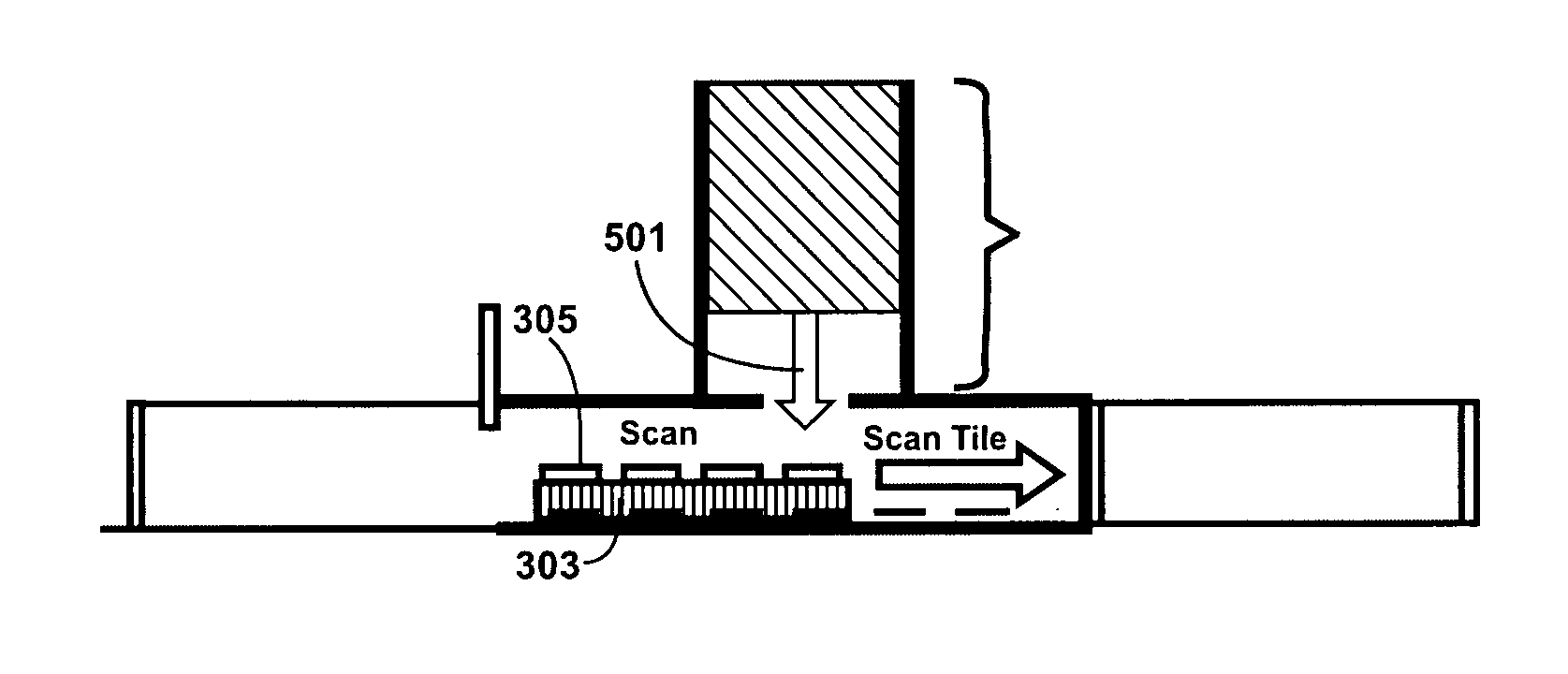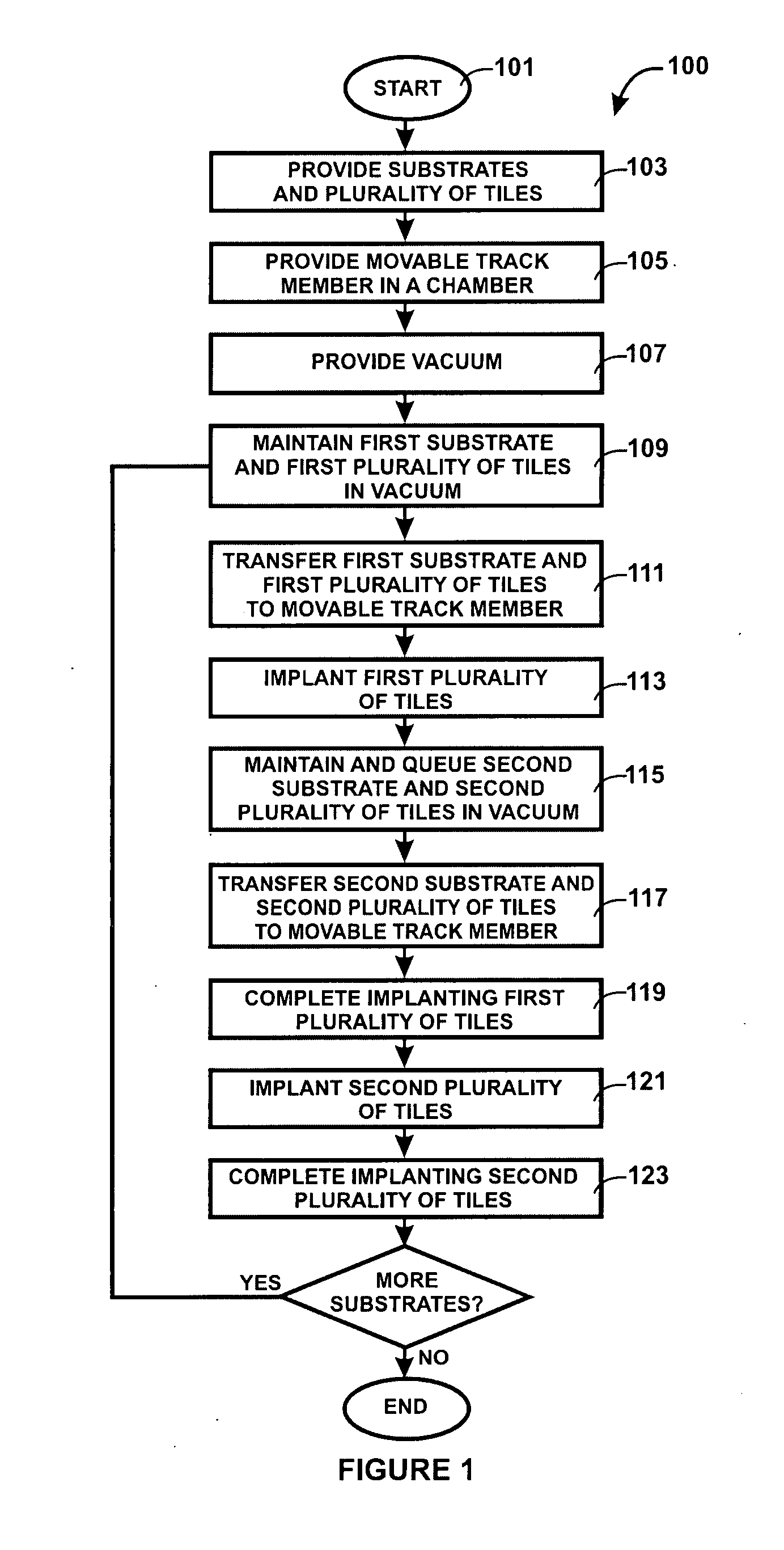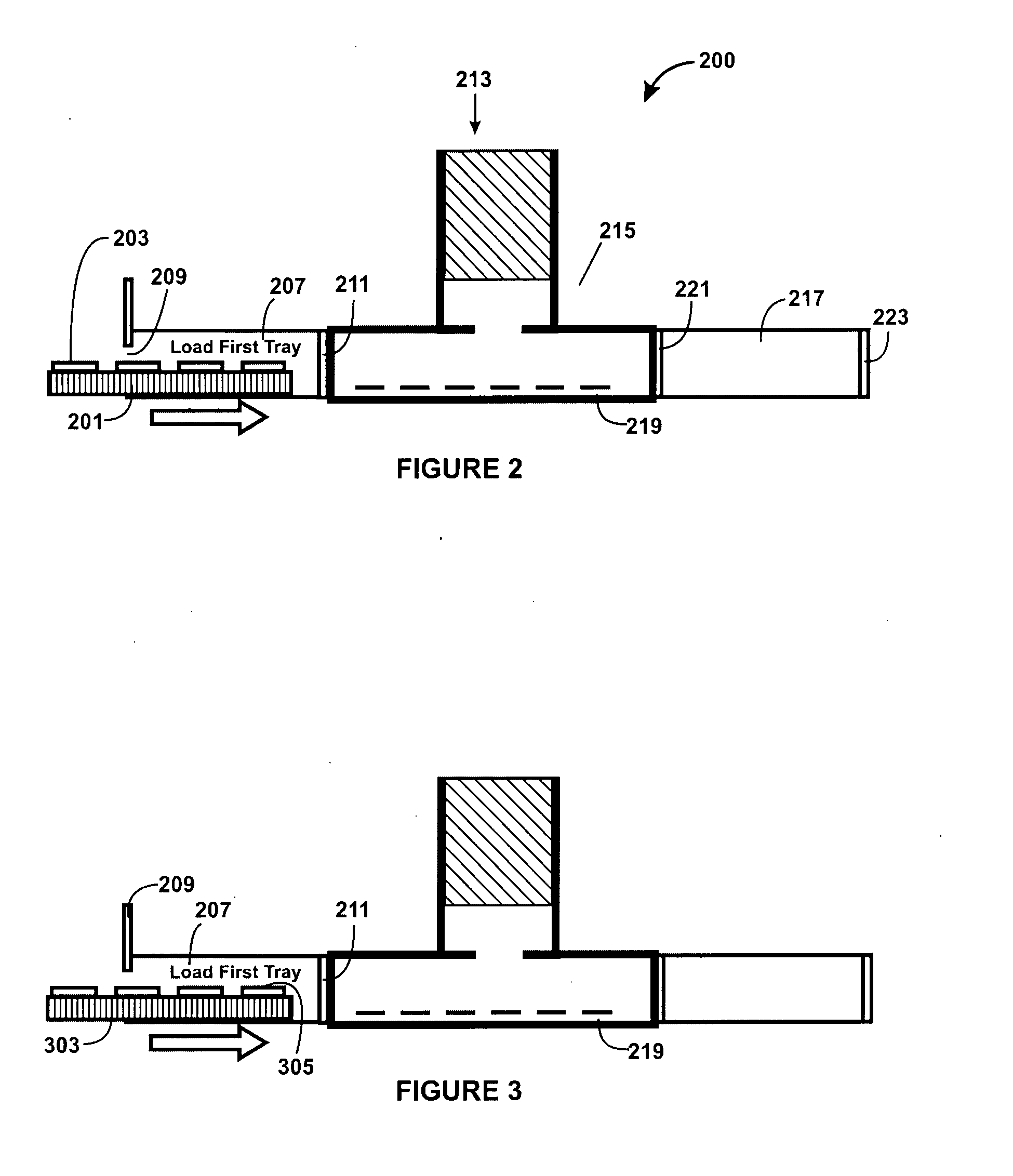Method and system for continuous large-area scanning implantation process
a large-area scanning and implantation process technology, applied in the direction of sustainable manufacturing/processing, final product manufacturing, transportation and packaging, etc., can solve the problems of difficult manufacturing, low efficiency of solar cells, and many limitations of solar cells, so as to reduce the channeling effect of implanted ions
- Summary
- Abstract
- Description
- Claims
- Application Information
AI Technical Summary
Benefits of technology
Problems solved by technology
Method used
Image
Examples
Embodiment Construction
[0036] According to embodiments of the present invention, techniques including a method and a system for forming substrates using a large scale implantation process are provided. More particularly, the present method and system provide a method and system using a scanning implant process for the manufacture of substrates, for example doped substrates as may be used as photovoltaic cells. In a preferred embodiment, such implanted process provide for impurity regions in a semiconductor substrate for fabrication of photovoltaic device. The impurity region may lie in a thickness of transferable material defined by a cleave plane in a donor substrate. But it will be recognized that the invention has a wider range of applicability; it can also be applied to other types of applications such as for providing impurity regions (active regions, source / drain engineering) in three-dimensional packaging of integrated semiconductor devices, photonic devices, piezoelectronic devices, flat panel dis...
PUM
 Login to View More
Login to View More Abstract
Description
Claims
Application Information
 Login to View More
Login to View More - R&D
- Intellectual Property
- Life Sciences
- Materials
- Tech Scout
- Unparalleled Data Quality
- Higher Quality Content
- 60% Fewer Hallucinations
Browse by: Latest US Patents, China's latest patents, Technical Efficacy Thesaurus, Application Domain, Technology Topic, Popular Technical Reports.
© 2025 PatSnap. All rights reserved.Legal|Privacy policy|Modern Slavery Act Transparency Statement|Sitemap|About US| Contact US: help@patsnap.com



